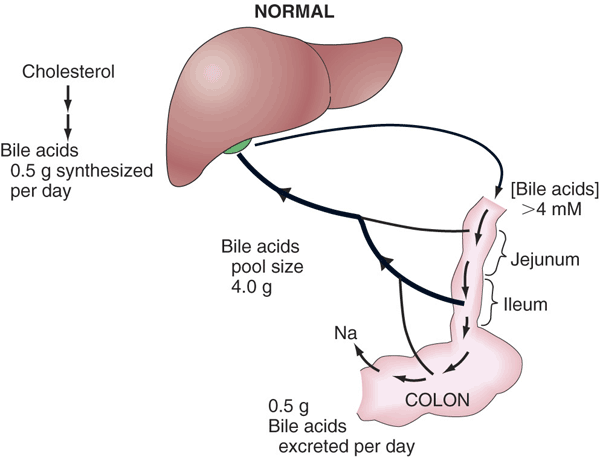
Schematic representation of the enterohepatic circulation of bile acids. Bile acid synthesis is cholesterol catabolism and occurs in the liver. Bile acids are secreted in bile and are stored in the gallbladder between meals and at night. Food in the duodenum induces the release of cholecystokinin, which is a potent stimulus for gallbladder contraction resulting in bile acid entry into the duodenum. Bile acids are primarily absorbed via a Na-dependent transport process that is located only in the ileum. A relatively small quantity of bile acids (∼500 mg) is not absorbed in a 24-h period and is lost in stool. Fecal bile acid losses are matched by bile acid synthesis. The bile acid pool, i.e., the total amount of bile acids in the body at any time, is ∼4 g and is circulated twice during each meal or six to eight times in a 24-h period.